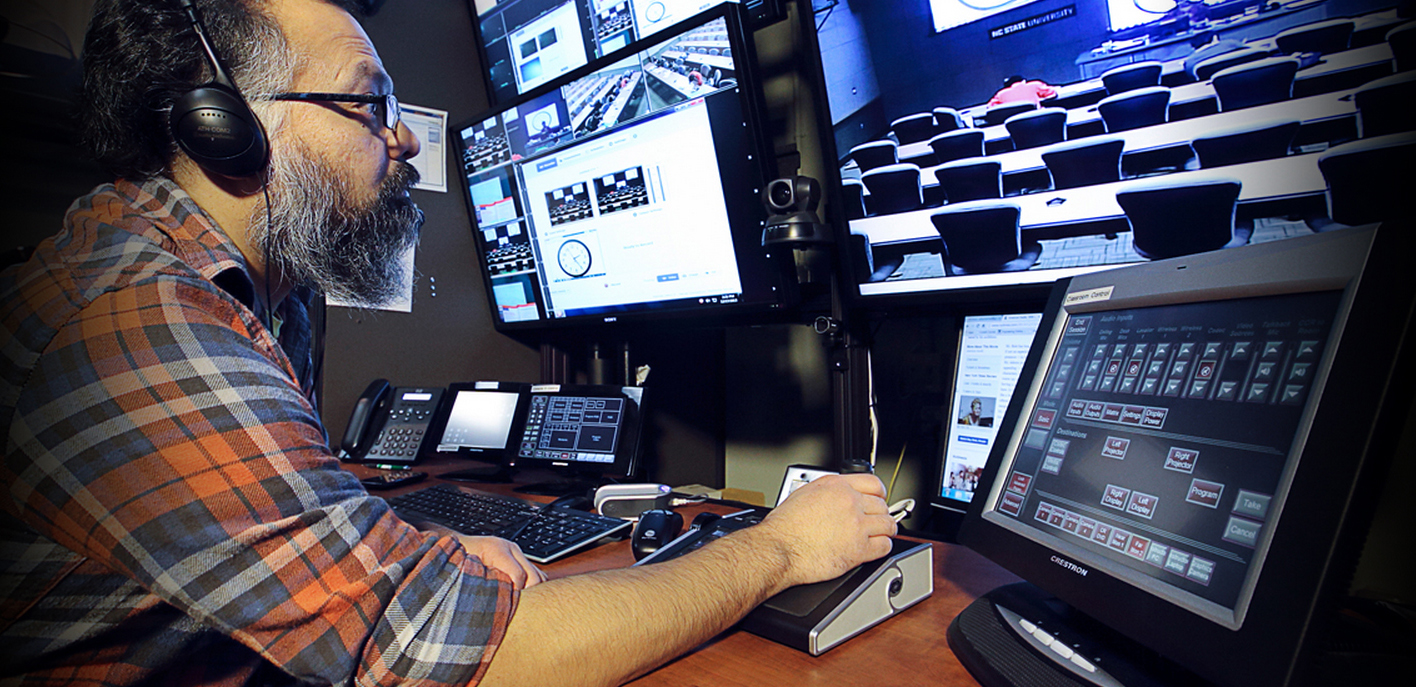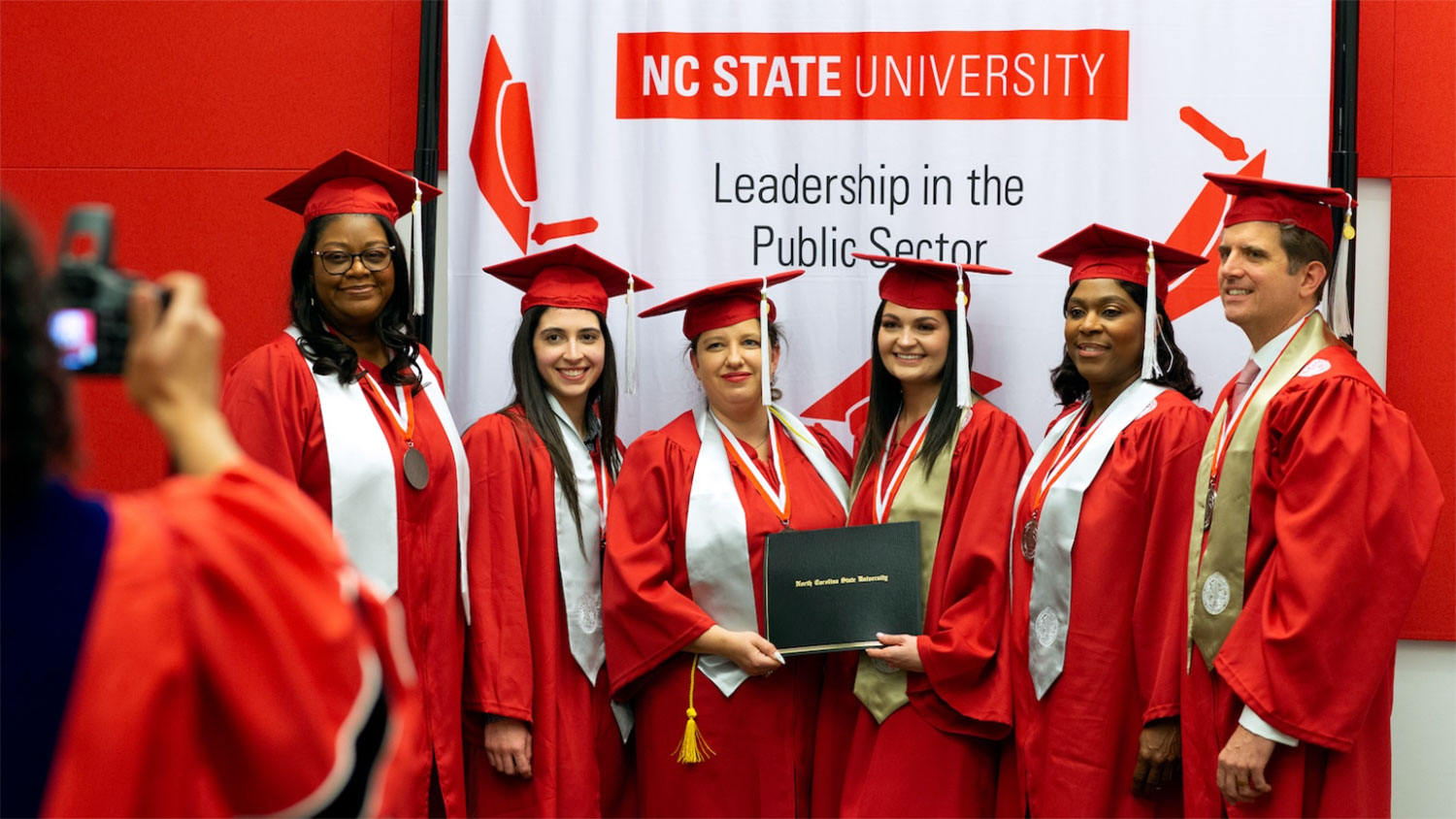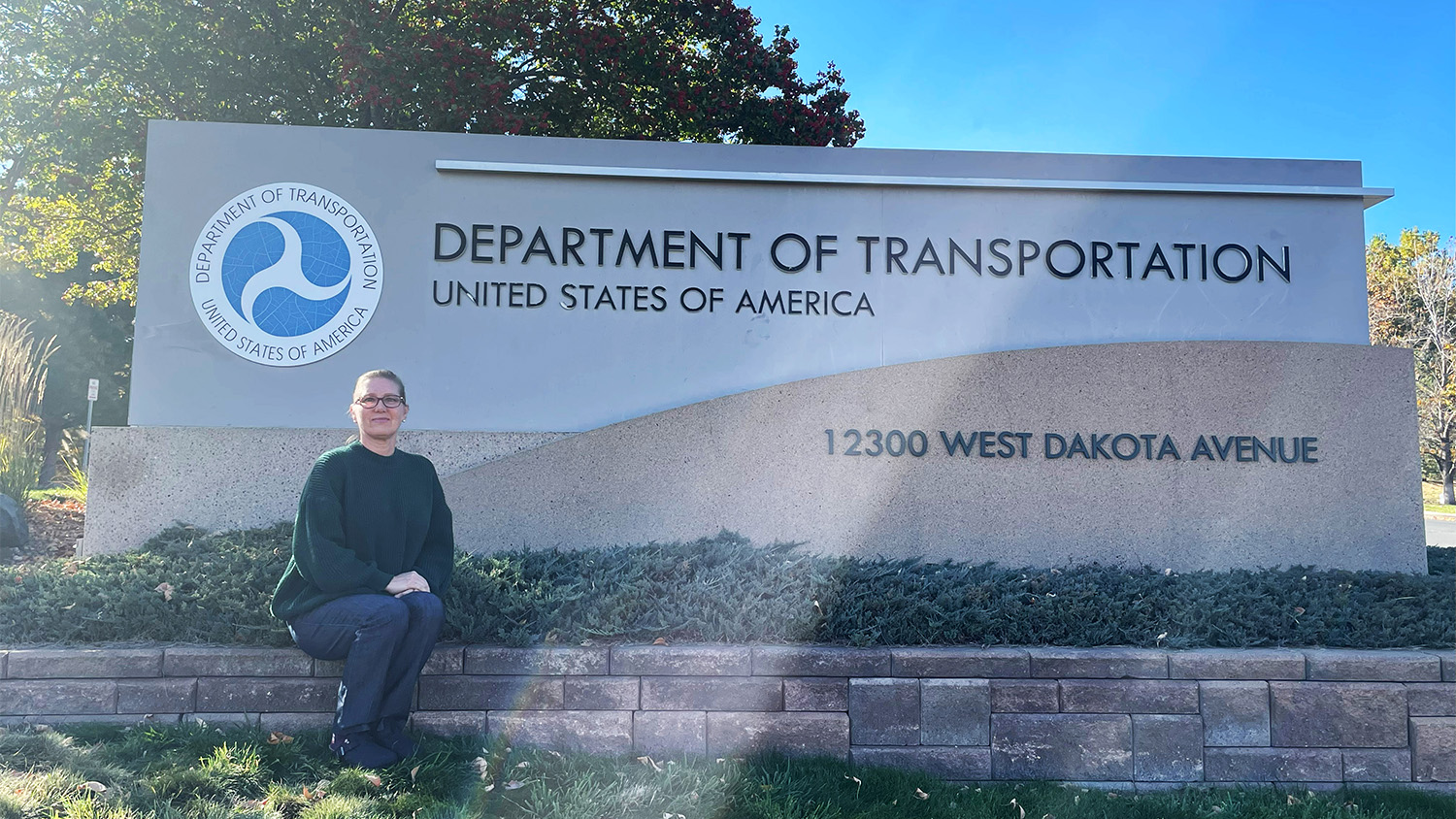Service that Scales: Recording Distance Education Courses–From a Distance

When faced with a 20 percent increase in demand for their Distance Education (DE) classroom recording services, Tony Pearson and his team in DELTA’s Video Communications Services (VCS) refused to choose between strong customer service and scalability. Instead, they found a way for their team to serve more instructors and students with the same commitment to service that this group has provided for more than 30 years.
“Our forte is to provide customer service behind the scenes,” said Pearson, DELTA’s associate director for VCS. “We want to be there for the faculty. We want to let them focus on pedagogy, and we’ll focus on the technology.”
When an instructor walks into a DE classroom, VCS staff are dedicated to making that day’s class recording process smooth and seamless. The instructor can concentrate on his or her lecture, the students in the room can focus on learning, and the DE students around the globe can be guaranteed that the course lecture will be uploaded fifteen minutes after the live class ends.
With a little vision, creativity and planning, VCS devised a plan for controlled growth of classroom recording services: the central control room (CCR) model.
In spring 2012, VCS launched production with the CCR, which allows classroom support technicians to remotely monitor and control classroom recordings around campus from their office in Ricks Hall. This new model replaces the previous practice of stationing one technician in a control room at the back of each DE classroom. Not only does the CCR allow a single technician to monitor production quality in multiple classrooms simultaneously, it also frees up physical classroom space for additional student seats.
After launching the CCR, VCS recorded more than 11,000 hours of classroom instruction in FY 2012-13 in its nine DE classrooms, supporting between 60 and 70 DE courses each semester. While this seems like an enormous load, VCS is prepared for even more. To date, only five DE classrooms have been refurbished to integrate with the CCR; by summer 2014 a total of eight classrooms will be operated remotely. And this doesn’t even begin to approach the 24-classroom capacity for the CCR.
“DE enrollment growth means increased demand for video recordings that support online instruction and downloads to mobile devices for anytime, anywhere access to course content,” said Dr. Rebecca Swanson, associate vice provost for Distance and Distributed Education. “Only by optimizing DE classroom capabilities can we meet the unprecedented demand for video recordings.”
With technicians removed from the classroom, you might expect customer service to suffer. Not so. Pearson has measures in place to guarantee excellent instructor support on a larger scale. For example, a technician serving as a runner arrives at the beginning of each class meeting to make sure that the recording is running smoothly. After the runner moves on to the next class, a remote technician is available at the touch of a help button. And in case some equipment fails, each classroom is equipped with a backup recorder poised to capture the classroom experience.
“We pride ourselves on having a lot of redundancy in place,” Pearson said. “I can count on one hand the number of sessions that we’ve lost in the last 30 years. That gives us the quality of service to say to our faculty that you’re going to get what you’re promised.”
This promise of quality service keeps the DE instructor-student experience focused on teaching and learning—not on the technology that makes it all possible.
Read More
For more DELTA stories like this one, explore the DELTA Annual Report 2012-2013.
- Categories:


